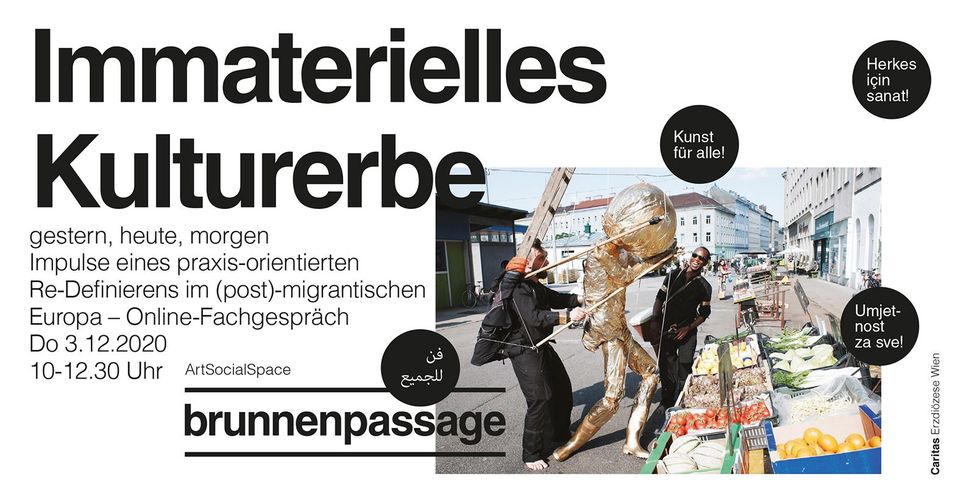Throughout Europe, the diversity of the population is a reality. However, this is still far from being officially recognized and often traditions and customs, even over many generations, are celebrated and practiced rather in secret. Even the so-called ethnic groups in Austria, which have been recognized for many decades, live intangible cultural heritage. Are social rituals increasingly mixing and hybridizing? How is this to be assessed? How is this treated in other European countries?
In this expert discussion, various current perspectives on Austrian intangible cultural heritage were presented and subsequently discussed. Invited were tradition bearers whose traditions, knowledge or practices are already listed in the national inventory of intangible cultural heritage; among them representatives of the Slovenian field and house names (registered in 2010) or the Stinatz wedding - Stinjačka svadba (registered in 2020). Both elements are characterized by an (internal) migratory heritage that is lived in the communities. Artists, activists and cultural workers who deal with intangible heritage in their projects in a creative way talked about the necessary process of recognition and identification of one's own lived cultural heritage in order to be able to carry it outwards.
Important questions such as, "Who defines what intangible cultural heritage is?" were addressed in the conversation. Cultural heritage stands and falls with its tradition bearers and their identification and creative transmission. The convention wants to make lived heritage visible in form and diversity as it is lived in a region. It is not limited to the traditions of the majority society, the origin is indifferent, emphasizes Helena Drobna, Regional Office Manager of UNESCO. Models from other countries show a completely different approach in a country's decision-making on how to recognize intangible heritage.
Output
It turns out that intangible heritage is strongly connected with emotionality, making it visible resembles the recognition of a part of one's own identity. (Art) projects pursue similar goals as a national register: Making visible, communicating and maintaining one's own heritage. The entry in a national register has above all symbolic significance. All the more timely is a directory that reflects the lived diversity in Austria and publicly recognizes the (post)migrant heritage.


![[Translate to EN:] © J. Ségur/ZED, with the permission of UNESCO](/fileadmin/_processed_/d/b/csm_Convention-2003-IKE_0832a6a47d.jpg)
![[Translate to EN:] © ÖUK](/fileadmin/_processed_/3/9/csm_P1011318_7eac86402f.jpg)

![[Translate to EN:] © Weitblickfilm](/fileadmin/_processed_/9/8/csm_Workshop_17_2dee1e1fd8.jpg)